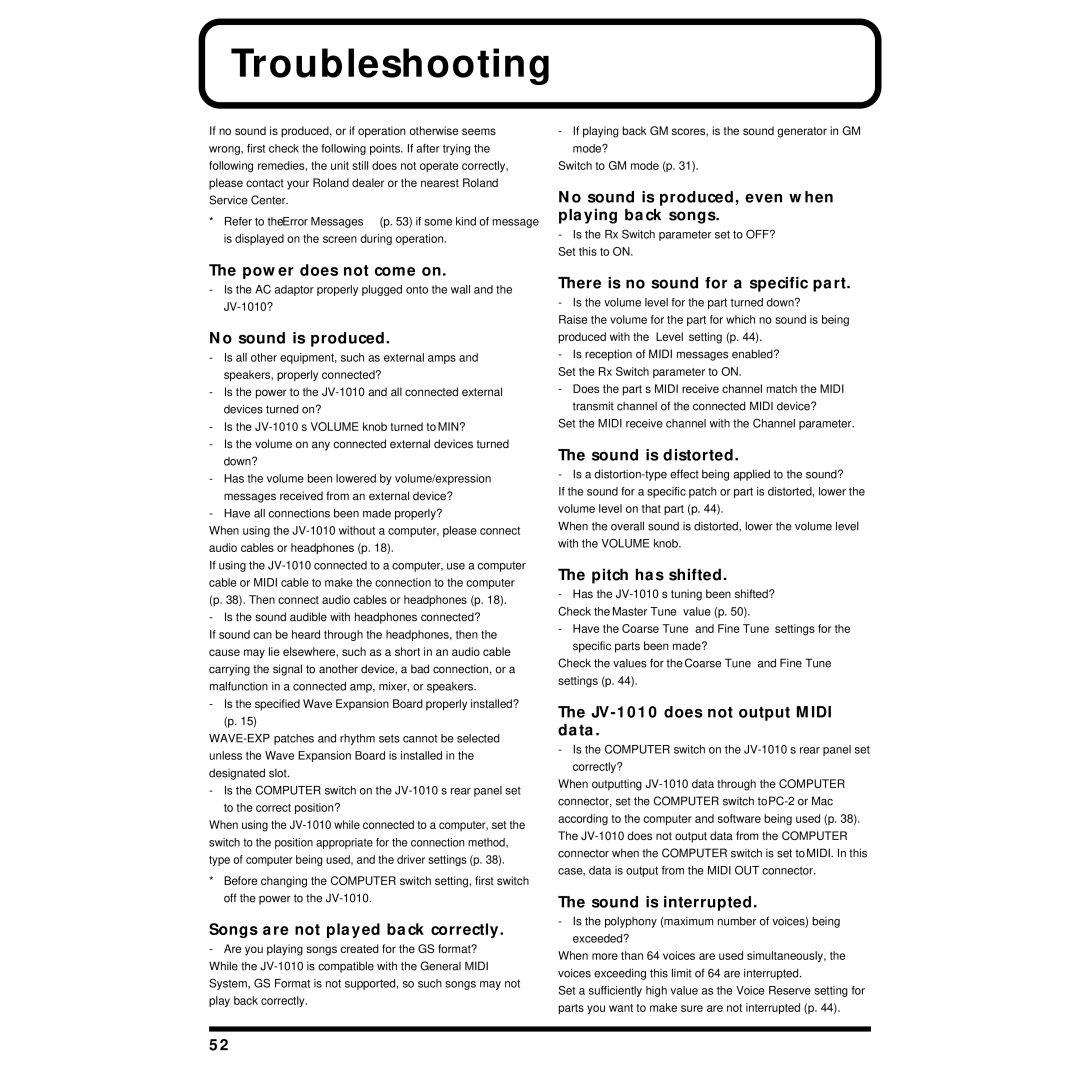JV-1010 specifications
The Roland JV-1010 is a compact and versatile synthesizer and sound module that has made a significant impact on the music production landscape since its introduction in the mid-1990s. Renowned for its extensive sound library and superior sound quality, the JV-1010 stands as a go-to device for musicians looking for a powerful yet portable instrument.One of the standout features of the JV-1010 is its expansive sound engine, which houses 1,024 patches and 36 voices of polyphony. This allows for complex musical layers without the risk of cutting off notes. The built-in digital effects processor comes with 40 types of effects, including reverb, chorus, and flanger, enabling users to further enhance their sounds and create unique tonal textures.
The sound generation technology behind the JV-1010 is based on the JV-1080 platform, leveraging Roland's acclaimed 'SR-JV80' expansion board technology. This modular approach allows users to expand their sonic capabilities by adding additional sound banks, providing access to a wide range of genres and instruments. Notably, the synthesizer includes sounds from various musical traditions, from orchestral to electronic, making it suitable for diverse musical styles.
Another key characteristic of the JV-1010 is its user-friendly interface. It features a clear LCD screen and organized button layout, making it easy for musicians to navigate through its extensive library. Additionally, the unit supports MIDI connectivity, allowing it to seamlessly integrate with other MIDI-compatible gear, such as keyboards, drum machines, and computers. This makes the JV-1010 an excellent choice for studios and live performance settings alike.
The compact size of the JV-1010, which allows it to easily fit into a standard rack mount or travel setup, adds to its appeal, especially for mobile musicians. The lightweight design does not compromise its durability, ensuring it can withstand the rigors of frequent transport.
Overall, the Roland JV-1010 synthesizer is a powerhouse of sound engineering, providing musicians with a rich palette of tones and textures. Its robust feature set, expansion capabilities, and portability make it a timeless instrument that continues to be appreciated by both seasoned professionals and emerging artists in the music industry. Whether used for studio production, live performance, or sound design, the JV-1010 remains a reliable choice for those seeking high-quality musical tools.

